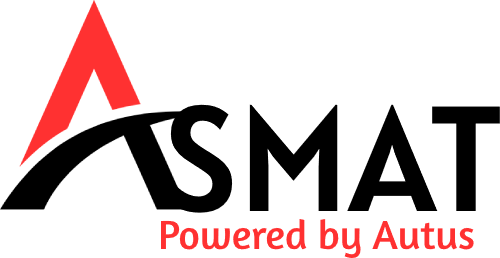
It is a widely popular belief that when it comes to SEO, content is key.
And while technical SEO does exist and plays a little role, Google has never shied away from stressing repeatedly that the key to popularity is publishing high-quality, useful content. But isn’t this kind of subjective? How can you know what exactly is perceived as ‘High Quality’?
In this article, we have compiled a list of five-content related signals Google uses to determine whether a specific article deserves to appear on top or not.
- Highly-Linked Content
One of the oldest ranking signals of Google is a backlink profile. Since launch, backlinks were at the core of Google’s algorithm. And while Google has admittedly added dozens, maybe even hundreds, of other signals, backlinks remain its most powerful one yet.It has one simple rule: The More, The Better.
Though when website owners figured out the rule and began manipulating Google’s search result pages, Google changed its strategy. It’s all so very complicated now that it’s doubtful whether even those working for Google completely understand how it works!
There are Good and Bad links; natural and unnatural links; and high authority and low authority links. One group may be balancing the other while others might be dragging you down instead of driving you up. And it’s near impossible to guess which link does what for you.
So it comes down to one simple solution: Add as many editorial and natural links as possible. The point is to create linkable content. And it’s very much in the creator’s power to produce content that attracts links.
What is linkable content?
There is no fixed definition as such for linkable content because links can be of many kinds. Educational content attracts links from teachers, bizarre content attracts the attention of media outlets and discussion boards, and innovative content might get links from niche journalists.So, it depends mostly on your research and you may not like it, but it may depend partly on your luck.
When creating an article, you can check out Buzzsumo to get an idea of what kind of content attracts most links on your topic. Buzzsumo filters results to see recently published content and evaluate the current linkable trends.
- Relevancy
This is an important signal, in spite of Google still being in the process of figuring this out.Earlier, having a specific keyword several times in an article or on a page was enough for Google to consider it relevant to the concerned search query. And it was as easily manipulated as it sound, so Google has been working on improving the relevancy signals.
Again, like the backlinks, we are referring to a group of signals here but in this case, creators possess a lot more control on how they create their content.
Semantic Mapping helps Google understand each query in context rather than matching the exact sequence of words to the indexed documents. Conducting your own semantic research can help you in creating better-researched, more relevant content, similar to how Semantic Mapping helps Google algorithmically calculate relevance.
Text Optimizer is another great tool in this regard that enables you to create a more relevant context to better match Google’s and its users’ expectations. Text Optimizer will also score your content on the basis of relevancy and point out possible areas of improvement.
Other improvements in Google’s relevancy algorithms which are not very easy to put into practise but are still good enough to garner a look are:
Google Hummingbird update
Google BERT update - Content Length
This signal has been the subject of a number of debates and arguments in the SEO space. In truth, it’s hard to come up with a definitive answer, in spite of the copious amount of research studies available on this topic that claim that Google favours long-form content. It is argued that long-form content may be generating more backlinks, so consequently it will be ranking higher.Always use your own editorial judgement, but as a rule of thumb:
- If you have a choice between two articles, choose the longer one.
- But, if you get a feeling that your long article is turning into a book, it may be prudent to break it into series of more specific subtopics.
- Finally, if you feel like you have fully covered a target question in a small word count, don’t force it. A small but useful article is much better than lengthy but useless one.
- Exact Keyword Match
While Google has largely abandoned exact-word matches, including your target keyword is still important.One research study found that “the vast majority of title tags in Google exactly or partially match the keyword that they rank for”. It is important to note here that most titles don’t have exact-match keywords but rather some variations of those.
This is indicative of the fact that Google is still looking at keywords, just more smartly than before, so keyword research and optimization is still important.
- Content Engagement
As far as we are aware, Google has never explicitly confirmed that they use on-page engagement, which is what people do once they arrive at your page, as a ranking factor.The difficulty with content engagement signals is obviously apparent: Is less engagement a sign of uselessness of the content? Or does it mean that the content was so good that it satisfied all queries totally?
These questions put both ‘Bounce Rate’ and ‘Time on Page’ under scrutiny as doubtful signals of content quality.
But satisfaction signals aren’t totally ignored, no. Google Analytics, for example, gives them plenty of data to peruse.
All content creators can do then is creating genuinely useful content, while keeping an eye on site analytics and content performance.
Finteza is a modern web analytics platform with a focus on conversions and engagement monitoring. Finteza will help you better understand which of your articles are being read in full, which of them send the users down the sales funnels and while drive them away from your site.
Conclusion
Of course, there are innumerable signals that help Google serve up the most relevant results. It is likely that hundreds of signals fire up any time a user clicks the ‘search’ button. Many of those SEO factors can be handled through plugins but no doubt, content is the major building block.It is impossible for any content creator to influence all aspects of SEO.
A content creator cannot influence all the aspects of search engine optimization. There are a number of complex technical elements to figure out, and then there are the ranking signals themselves, some of which may be out of the creator’s reach.
Though as a creator and marketer of content, you have the power to fulfil the most important task of all: Creating a high-quality, high-ranking asset.
